Cape Breton has existed as a Shangri-La of sorts for Americans for over half a century, firmly rooting itself in the imaginary of New York’s avant-garde circles, political radicals, draft dodgers, back-to-the-landers and, more recently, those simply looking for an affordable getaway. AMISH MORRELL, a Cape Breton-born writer and curator, chats with New York artistic duo ERIK MOSKOWITZ and AMANDA TRAGER about their memories of the Cape Breton of their youths, exploring the pull of place and the idea of Cape Breton as refuge and site of utopian projections.
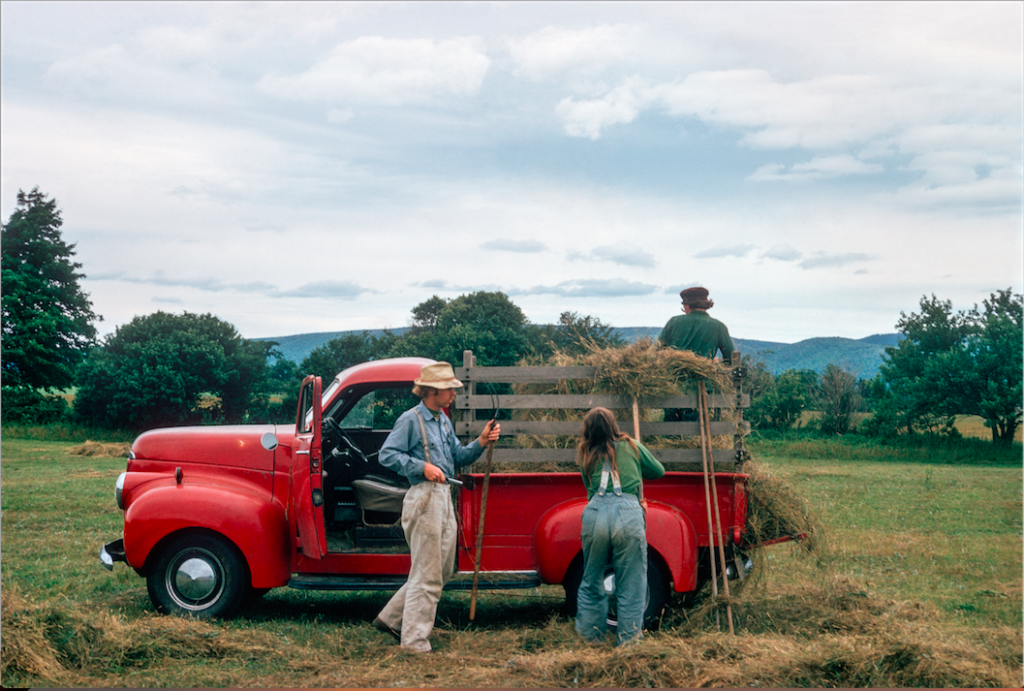
Early back-to-the-landers making hay. Photo: George Thomas, Northeast Margaree, 1973. Courtesy of George Thomas and Cape Breton University Art Gallery.
AMISH MORRELL: I’ve been reflecting on our conversations from this past summer, about our respective projects focusing on artists and members of the counterculture who came to Cape Breton during the 60s and 70s, and how this place was a refuge for many of these people, whether they were draft-dodgers searching for an alternative to mainstream society, or artists who simply wanted a quiet place to make their work. One of the things that struck me was the similarity between Erik’s and my own stories. I’ve also been reflecting on the relationship between aesthetics and survival, and how Cape Breton inf luenced culture and ideas that came to circulate internationally.
My story is that my parents came here from the United States in 1972 and bought a farm at the end of the road in Cape Breton that had a barn and a run-down farmhouse with no water, phone, electricity or indoor plumbing. Although they installed these modern conveniences, we otherwise lived as families had lived there for generations, raising animals, growing our own vegetables, cutting our own wood and lumber, existing almost entirely outside of a cash economy. And while both my parents had gone to college and were part of an educated American middle-class, they had skills that enabled them to readily integrate into a rural subsistence economy. My mother knew how to care for livestock and my father could build and repair the kinds of machines that people used, such as sawmills and farm machinery. At the time, young people were moving out of rural communities and these practices were being abandoned, so there was a vacuum that people like my parents could inhabit.
“As children, Margaree Island was a psychic and literal destination for me and my friends, and the adults also seemed to focus on it as a locus of endless fascination; it seemed to embody our deepest collective desires.” — ERIK MOSKOWITZ
ERIK MOSKOWITZ: My parents bought their original property in Cape Breton around 1973. My mom’s sister, married to a draft resistor, had been living in Montreal. Around 1969, a group of artists from the downtown scene in New York that included Joan Jonas, Richard Serra, JoAnne Akalaitis, Rudy Wurlitzer and Philip Glass started spending summers in Cape Breton. They ran in the same circles as my family in New York and they initiated our first forays to the Maritimes. Cape Breton gave my mom and her sister time they wouldn’t have otherwise had to see one another.
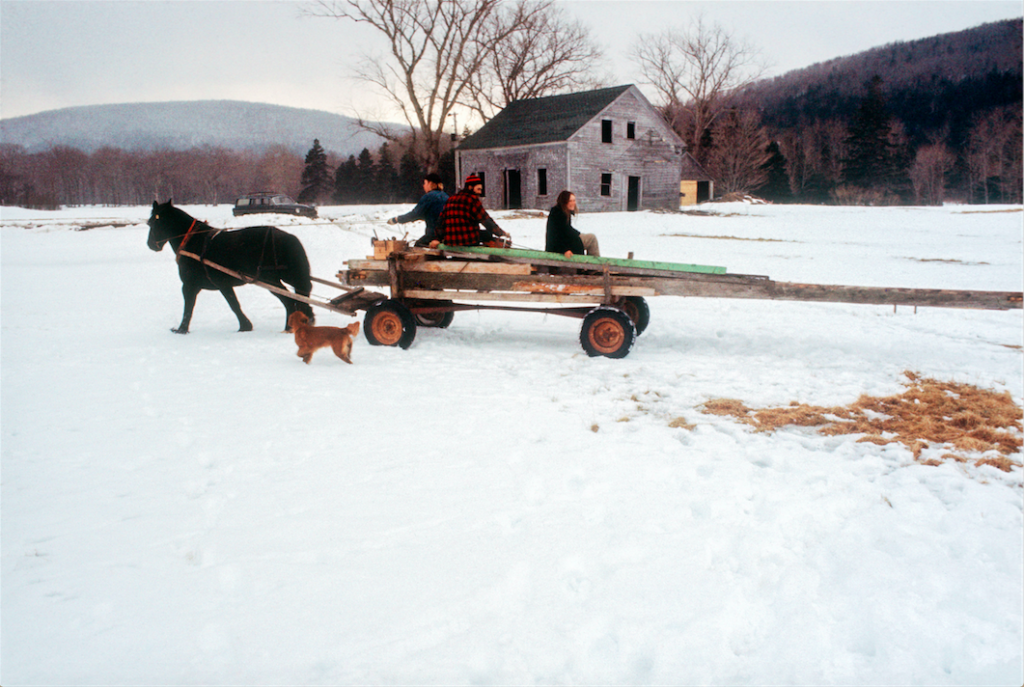
Photo: George Thomas, Northeast Margaree, 1973. Courtesy of George Thomas and Cape Breton University Art Gallery.
My parents would set up camp for the summer on our forty acres of land on Sight Point Road. The setup was surprisingly similar to the way we were already living in New York: artists were inhabiting industrial buildings that had been under-utilized or left behind by the manufacturing sector. The spaces were completely raw, equipped for the industry that had existed for the past century. Makeshift arrangements enabled workspace for making art, along with living spaces but with no residential infrastructure. We camped out in our huge abandoned loft space, using white gas for cooking on Coleman stoves. We collected used wooden trucking pallets from the street to heat our loft, whose heat shut off after working hours (5 p.m. at the time).
Summertime we’d pack up our loft’s camping gear, bring it north and live in tents. Once a farm, our property was now subsumed by rose bushes and spruce trees. Being in Cape Breton was a chance to leave the city heat and be in a different culture, but a culture that afforded yet another re-interpretation of space left behind in the wake of previous economies. During the first days of our arrival, a man named Dan Huey MacIsaac came around and pointed out the foundation from the old farmhouse that had collapsed and melted back into the land. He showed us where the spring was and other physical details of earlier life there. The other families from New York also moved into neighboring abandoned farms or hunting lodges that had outlived their original purposes. In both New York and Cape Breton there was what felt almost like a mission: to utilize and re-purpose the abandoned spaces that related to industry and economies from another era.
AMANDA TRAGER: My summer camp experiences in Vermont didn’t quite prepare me for Cape Breton! I only started coming in the 90s, as an adult. Amish, I’m curious about your regard of Cape Breton as a creative site. Can you speak more about your thinking around this, and how this has been a discursive project for you?
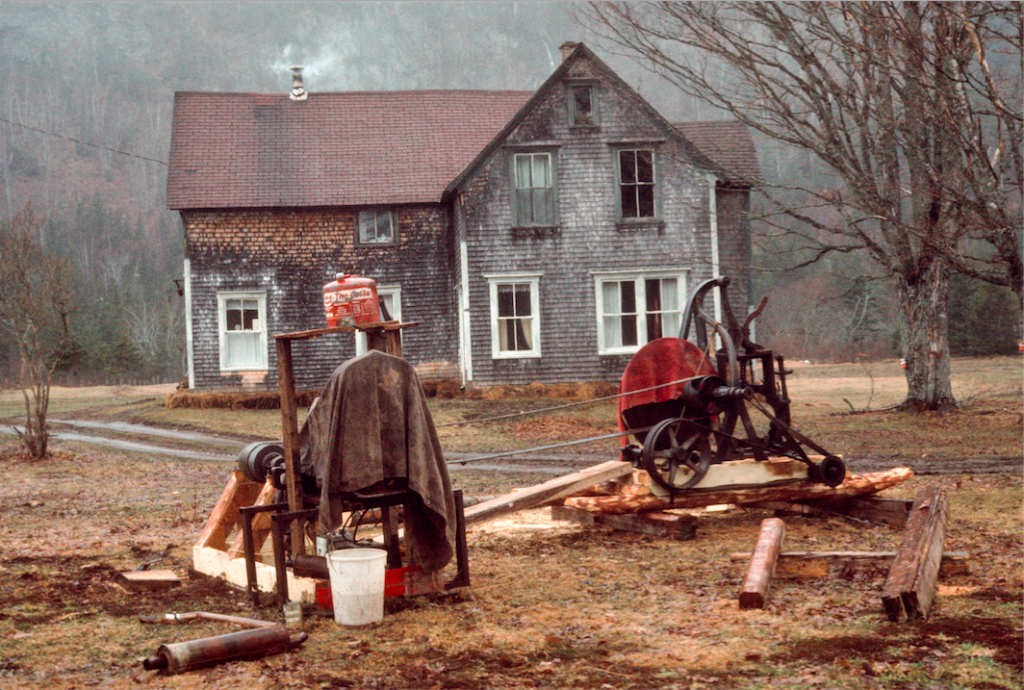
Amish Morrell’s childhood home in Cape Breton with machinery for making shingles in the front yard. Photo: George Thomas, Northeast Margaree, 1973. Courtesy of George Thomas and Cape Breton University Art Gallery.
AMISH: I see Cape Breton as a creative site in a few different ways. In the case of my family, my mother, Anne Morrell-Robinson has been making and selling quilts since the mid 70s. After my father died in 1984, that was how she supported our family. For people like my mother and other artists and craftspeople, selling things they made often supplemented subsistence food production. While this kind of work circulates as part of the tourist and craft economy, and reinforces ideas of rural cultural authenticity in Cape Breton, it’s also shaped by more global influences and forces. For example, one of the events that informed my mother’s beginnings as a quilter was a show at the Whitney Museum in New York in 1971, called Abstract Design in American Quilts. Many back-to-the-landers used craft as both an ideological and economic means of support. While this work can be found across
the province, it tends not to be shown outside the region.
On the opposite end of the spectrum is the way that Cape Breton has operated as a creative site for the artists who come here in the summer. I’m referring to Erik’s parents, and many of the other artists from New York, who for the most part have hidden out in Cape Breton, where their work isn’t really legible to a lot of people. But there’s a middle-way between these two worlds and that describes what happened for my father. After going to art school, in 1971 he went to the Whitney Studio Program in New York, and then did his MFA at Rutgers. At the time, Rutgers was ground-zero for the Fluxus movement, and he worked with Robert Watts and knew Geoffrey Hendricks, who had already been coming up to Cape Breton. My father was familiar with a lot of the people and ideas circulating in the art world at the time, but he and my mother decided to come straight to Cape Breton after he finished his MFA, because at the time Cape Breton was more interesting to them than New York.
“I remember my father describing our life in Cape Breton as a more perfect realization of his work as an artist. He had to apply his skills in ways that were more utilitarian than aesthetic, as part of surviving in Cape Breton.” — AMISH MORRELL
It was always obvious to us—to me and my brother Ezra, and to other people around us—that my mother was an artist because she made quilts, but it wasn’t as clear how my father was an artist. He was constantly building and repairing things, like an elevator that lifted firewood from the basement, cars, tractors, sawmills and antique machines that served one function or another on the farm. He would sometimes show us his movies or artworks, which could be quite abstract, like a film that simply repeated a single- frame of someone throwing a rock 1,000 times. But I remember him describing our life in Cape Breton as a more perfect realization of his work as an artist. He had to apply his skills in ways that were more utilitarian than aesthetic, as part of surviving in Cape Breton. My parents weren’t working with other artists as much they were working with their neighbors with whom they exchanged skills and labor; taking care of horses, making hay, or cutting wood. In retrospect, I realize that this was an aesthetic project in the sense of making a life that fit with their Quaker social and spiritual ideals, which included simplicity and self-reliance. They emphasized labour and being known by one’s actions, as well as direct experience and learning by doing, which were the primary ways that knowledge was transmitted in Cape Breton at the time.
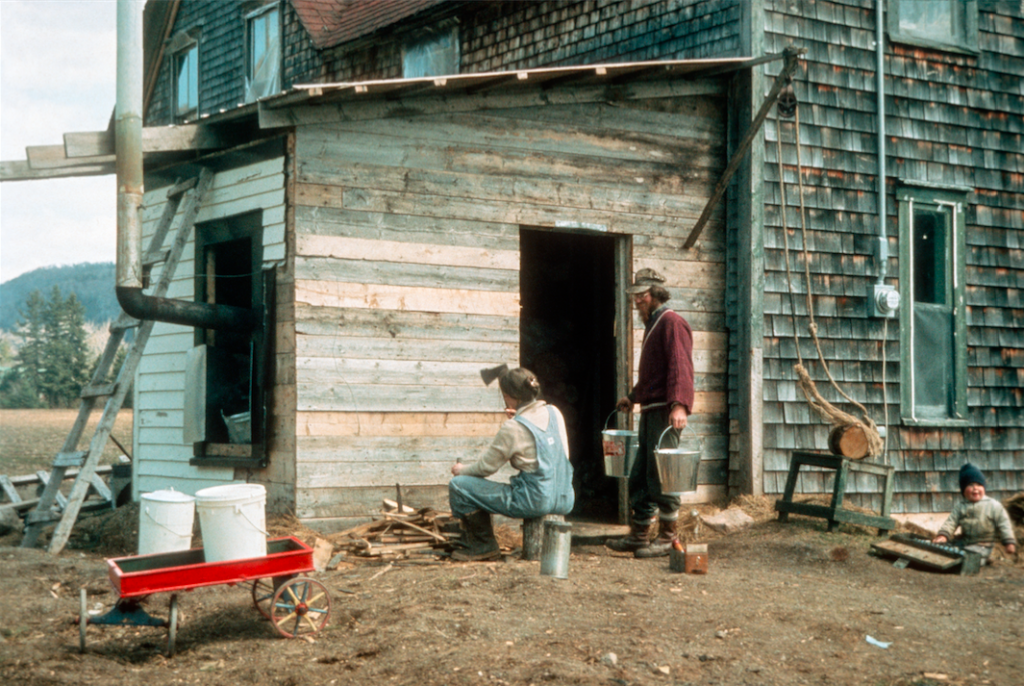
Amish Morrell (right) with parents Anne and Gary. Photo: George Thomas, Northeast Margaree, 1973. Courtesy of George Thomas and Cape Breton University Art Gallery.
AMANDA: So interesting, beginning with your mother’s quilts! I saw that Whitney show when I was 12. There was another amazing Whitney exhibition thirty years later of quilts made by members of the Black community in Gee’s Bend, Alabama, which was even more revelatory in terms of connections between local craft, long traditions and contemporary art. Quilts are so interesting in the way they conflate or problematize these connections, but also in how they sustain life, providing a living to the quilter and keeping folks from freezing to death! Plus they’re made from scraps that would otherwise be thrown away. This relates to Anna Tsing’s discussion of salvage accumulation; the idea of life outside of capitalism. Thinking about survival within an aesthetic modality feels urgent now.
AMISH: I’m also interested in how Cape Breton was connected to an international avant-garde. While we can look at how people who came to the Island had a role in shaping its culture, I think that it’s more interesting to consider how the Island and its people have secretly inhabited a more global art world. In Joan Jonas’s They Come to Us Without a Word, the work she made for the 2015 Venice Biennale, she uses fragments of ghost stories from The Cape Breton Book of the Night and populates her videos with characters and objects and scenes from near Inverness. For anyone from Inverness county, her performance and installations are clearly made in and are about this place. It’s the same with Robert Frank and Rudy Wurlitzer’s film, Keep Busy, which was set on Margaree Island. The connection isn’t just artists, though. Stewart Brand, who founded The Whole Earth Catalog and was one of the key architects of the back-to-the- land movement, also lived near Mabou Mines for some time during the early 70s.
AMANDA: We saw Robert and Rudy’s Keep Busy together at Anthology Film Archives in 2008. Erik had seen it earlier, but we went crazy over it because, for us, it functioned first as an expanded home-movie exercise, literally so in that it included many of the adults Erik had grown up knowing in New York and Cape Breton— people I had also come to know. The film was made in 1975. Rudy wrote the script on the back of an envelope as they made their way to Margaree Island to begin shooting. JoAnne Akalaitis invited the late, great Samuel Beckett actor, David Warrilow, up from New York to participate and the story, such as it is, seems like a Beckett-like take on Cape Breton locals as they prepare for winter, but in a way that is somewhat vaudevillian, with Richard Serra seen constantly astride one of the shacks while disassembling it, and Joan Jonas laughing hysterically as she pushes a mound of garbage up a hill. JoAnne gives a marvelous performance as a feckless yokel. There are many stories about them being stranded on the island while making the film and nearly losing the footage when they came back in a storm. Absolutely no one seems to agree on how long the process took. Was it a few days or a few weeks? We’ll never know.
But June Leaf told me that some of the locals who saw the film felt they were being mocked. Local people lost lives and limbs through their work on that Island. We interviewed a man, Herbie MacArthur, whose parents both drowned on their way to tend the lighthouse there. The gap between these groups’ stories about the island is stark.
In about 2013 we came around to wanting to make work in response to the film and its production. At the same time, we got turned on to the speculative fiction of Octavia Butler through Kodwo Eshun and Angalika Sagar of the Otolith Group and wondered: Can we somehow combine these works? Can we tell the story of the New York artists coming to a remote place of great natural beauty, living among agrarian people from another time— from the perspective of Afro-futurism? To many folks this seemed fanciful and in need of defense. But we’ve held on, in a landscape of changing awareness wrought by the Black Lives Matter movement. We’ve spent the past few years in research mode.
“Thinking about survival within an aesthetic modality feels urgent now.” —AMANDA TRAGER
ERIK: As children, Margaree Island was a psychic and literal destination for me and my friends, and the adults also seemed to focus on it as a locus of endless fascination; it seemed to embody our deepest collective desires. The coast curves around the smaller, abandoned island and creates a natural amphitheater so that it becomes a central figure in the landscape and psyche of the community here.
After first seeing Keep Busy, Margaree Island became a logical place to imagine a re-centering of my own sense of cultural identity. What if the planet had begun a process of cultural remapping during the Keep Busy production, with Margaree Island the center of this newly terraformed culture? I saw the Keep Busy cast and crew as back-to-the-land psycho-geographers. The flâneurs of Paris re-imagined on that abandoned island, literally deconstructing the shacks that housed the former fishermen, for no other reason than the inevitability of poetic gesture while the camera rolled. Keep Busy exists for me as a document of a production, a distant remnant of that original gesture, those folks wandering through that landscape, at that time, and also an imagined future that unfolds from that time and place.
AMISH: I’ve been trying to map out the points of early contact for some of these American artists who started coming here in the late 60s. A key actor in that story is Carmelita Hinton, who founded the Putney School in Vermont, in 1935. This past summer David and Tamara Rasmussen in Bay St. Lawrence told us about how Carmelita and a group of students from Putney came to Cape Breton on a bicycle tour in the 30s or 40s, and bought a disused farm along the coast between Mabou and Inverness, to use for the school’s International Program. Over the years the Putney School sent students to Cape Breton to work on the farm, and to run summer camps there. A lot of people, including David Rasmussen, Jon Hendricks, and Parker Barrs Donham, came to Cape Breton as counsellors for the Putney School camp, or as Putney students.
Among these people was Timothy Asch, who had worked with Ansel Adams and some of the other modernist photographers including Paul Strand and Minor White. After coming to Mabou Mines on a Putney School trip, Asch returned in 1952 to make a photo-documentary as part of the Stirling County study, a project that employed visual anthropologist John Collier to study mental health effects on people as a result of migrating from fishing and farming communities along the Digby Neck to larger centres such as Digby. The Mabou Mines photographs were to serve as a “control group,” documenting subsistence farming and fishing. The images he produced were in the style of the Farm Security Administration photographs of the 30s, documenting rural conditions during the Great Depression. I suspect that in looking a lot like the rural United States in the years before WWII, Cape Breton would have occupied a particular place of imaginative potential for these critics of modernity and leftist-progressive educators.
For me, this shows that the idea of Cape Breton as a refuge, from the kinds of political and economic changes going on in the United States after WWII, existed among leftist-artistic circles as early as the 40s. Timothy Asch came to Cape Breton almost 15 years before Robert Frank, Joan Jonas, Richard Serra, JoAnne Akalaitis and Philip Glass. Cape Breton inhabited the imagination of successive generations of artists, from the 50s through the 70s, in similar ways. This attraction and integration was aesthetic, ideological and practical. The Putney School students, for instance, helped their neighbors make hay, repaired the farm buildings and went on hiking trips. The school’s educational philosophy was heavily influenced by the ideas of American philosopher and progressive educator John Dewey. Instead of athletics, they did farm labour or went on hiking trips.
“Cape Breton as a site for so many people’s utopian projections is something that defies easy explanation” —AMANDA TRAGER
AMANDA: I love hearing this history, particularly about the visual anthropologists. The overlap between political radicalism and the avant-garde is fascinating. I see Robert Frank’s work as a turning point in this tradition of documentary photography. Although The Americans could be used as a visual textbook explicating class and racial divide in America during the 50s, it also represented a departure. It was not distanced or objective, but intensely felt, off-kilter in every way; profound on another level. And then he abandoned that kind of work at the moment of its highest acclaim. He became a different kind of photographer, more playful, and he became a filmmaker. I don’t think he wanted to be associated with photojournalism or social justice issues. He wanted to be an artist, which in those days, didn’t dovetail with politics too much, or not in the ways that it had. He fell in with the Beats, that quintessentially optimistic American movement. But growing up in Switzerland as a Jew during WWII, he was a doleful guy. So maybe for Frank the move away from overt politics is more akin to the Surrealists or the Dada movement’s cultivation of the absurd in the aftermath of WWI—a purposeful response to, and escape from, that period’s horrors. During the time that we’re speaking about, Frank’s horrors included the deaths of both his children.
The New York artists who came here shortly after Frank in the late 60s and early 70s were also not like the socially-conscious photographers; their work was not motivated by politics. Nor did they embrace the ecstatic chaos of the Beats. But then, what were they, as a group? We tried all summer to link the older artists in our circle to the larger countercultural moment—a.k.a. the hippie movement—to no avail. Their disavowal is almost comical given the way they lived. But they were not seeking alternatives to consumer culture. They possessed outsized ambition, and they desired recognition and financial support, all of which came from New York City and other urban art centers. Needing to get away for the summer, they came here because land was cheap and they had very little money and this was a place they could all be together. They came to know other communities of people “from away,” like the back-to-the-landers, only gradually or not at all. They were self-involved and involved with one another. Their work was what it was all about. For artists like your father who came to live on Cape Breton as part of the back-to-the-land movement, life and art came together. Not so for these driven New Yorkers.
Even though that’s the scene to which we’re most connected, perhaps Erik and I are trying to return to the attitude of the earlier visual anthropologists and the back-to-the-land artists. We’re thinking about a work that re-invests in the idea of Cape Breton as a place that actively models alterity and ways of re-thinking community. In our fantasy, the avant-gardes and countercultures come together—but informed by Black theory and Black presence, like an aspirational, alternative history realized in a future. We learned so much about Black Nova Scotian history this summer, including the fact of thousands of free Blacks coming here as British Loyalists after the American Revolution, and other waves of migration. Marcus Garvey visited in 1937. He delivered a speech in Sydney that formed the basis of Bob Marley’s Redemption Song. We heard a lot about this history from Theresa Brewster, chair of the Universal Negro Improvement Association (UNIA) in Glace Bay. The UNIA was started there in 1914. According to her, there’s a general lack of knowledge regarding Black presence within Canada. Scholars like Katherine McKittrick, Rinaldo Walcott and Afua Cooper say the same thing. For us, as Americans, this ignorance was even more pronounced in that we weren’t even fully aware that slavery had existed here.
Connections between Black life counterculture and nature became more tangible only after absorbing Fred Moten and Saidiya Hartman’s 2016 talk “The Black Outdoors,” at Duke University. We’re still thinking about the similarities, and mainly the differences, between the escaped slaves of petit marronage finding temporary refuge while hidden in mountain homesteads and 60s American draft-dodgers escaping to the Canadian woods. However inadequate the comparison may be, both are instances of people living outside capitalist space, however precariously. Fred Moten’s talk with Robin D.G. Kelley earlier this year at University of Toronto (along with Rinaldo Walcott and Afua Cooper) was also eye-opening, particularly Fred’s way of seeming to speak not on the level of theory, but quite literally, about saving the planet through small self-organized cells.
AMISH: Earlier you referenced Octavia Butler and the idea of speculative fiction. As I understand it, it projects a possible future.
AMANDA: This fall we’ve been in Los Angeles, of all places, with fires raging like never before, but predicted in Octavia Butler’s fiction. We’ve been studying under the great Tananarive Due and Steven Barnes, keepers of Octavia’s flame and prominent figures in the field of Black horror and sci-fi. Our project is a geographical mash-up, as was the North Atlantic slave trade and its aftermath. Black horror is a rising genre without, completely unsurprisingly, much white contribution. But centuries of slavery and post- slavery have taken a toll on everyone, including slave-owners, who grotesquely dehumanized themselves to do what they did, and went so far as to institutionalize their crimes against other humans. To that extent, slavery is everyone’s horror story. Fiction can re-tie threads in different patterns; it can heal; it can re-think a future.
AMISH: Many people who were attracted to Cape Breton during the 60s and 70s—back-to-the-landers in particular—sought to create a future that was radically different from what they’d left behind, but had elements that were well in place within Cape Breton communities. Cape Breton was an emancipatory space—at least in their imaginations, and at least until cold cashless reality sunk in. How does the speculative play out in how you approach the history of these artists in Cape Breton?
AMANDA: Cape Breton as a site for so many people’s utopian projections is something that defies easy explanation. We’re adapting our research into a script that includes all the groups we’ve been discussing, not just the artists. The back-to-the-landers, the Buddhists are now all part of the story. We’re aware that re-telling the story of Cape Breton as refuge through the lens of Afrofuturism and Black horror may be controversial, or feel random. But a trope within Afrofuturism and social justice-oriented sci-fi is that imagining a better future is foundational to realizing one. Enslaved Blacks believing in and fighting for slavery’s end meant investing in a fantasy; it was their science fiction. But it happened, miraculously, more or less. Believing capitalism can end is our current science fiction. The global ecology, of which Cape Breton is a part, has always been at the heart of these struggles.

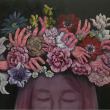
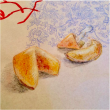













Interesting read, and felt personally – my parents were part of the back-to-the-land movement in rural Cape Breton, we moved there in 1972. I know many of the people mentioned. It feels like an oversight not to mention indigenous culture or art – such as Ursula Johnson’s (from Eskasoni) rebellious use of Mi’kmaq basket weaving. http://www.cbc.ca/radio/ideas/ursula-johnson-a-new-rock-star-in-the-art-world-1.4500391
I was one of those back-to-landers moving to Forest Glen at the headwaters of the Margaree River, seven miles as the crow flies to the ocean near Cheticamp and 12 miles down the road to Margaree Valley. In season we had our own boat to fish lobster down near Margaree Harbor. Our eight sided log house was after a Navajo design (a bit anyway) where our daughter was raised for the first years, though the marriage didn’t last seven years and I went back to university in Halifax. I often think of those days: the beauty, the rhythms of nature…and the idealism…in 2021 maybe it’s time to move back from Los Angeles. 🙂
love you , from jungle george